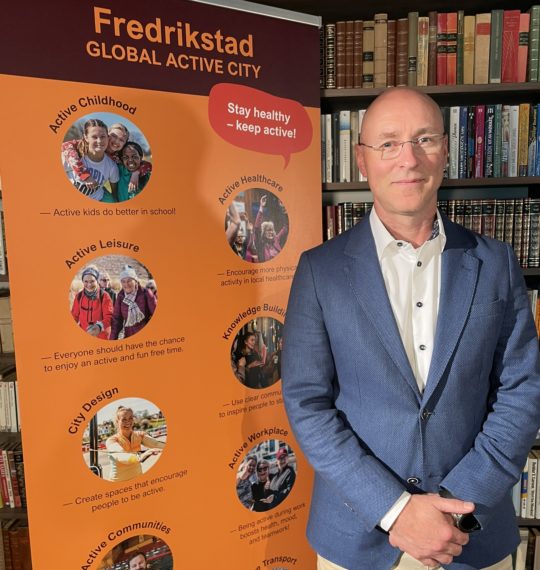Physical active learning was one of the main topics at the conference “Active School: The Foundation for a Life-long Physically Active Lifestyle”, hosted by Fredrikstad Municipality at the end of September. Teachers from Fredrikstad, along with guests from Ireland, Austria, France, and Germany, participated in this workshop, which was part of the ERASMUS project Pacte+.
One of the speakers was Professor Per Morten Fredriksen from Østfold University College and Inland Norway University of Applied Sciences. We sat down with him to discuss how physical activity can be integrated into the school day and how it contributes to both health and learning.
Can you introduce yourself?
My name is Per Morten Fredriksen, and I am a professor of physiotherapy at both Inland Norway University of Applied Sciences and Østfold University College. My area of expertise is circulatory physiology.
Can you tell us more about your work at Østfold University College?
I started working at Østfold University College on the 1st of February, so I am quite new in the role.
At the moment, I’m involved in a project looking at how we can map the health of Fredrikstad’s residents—children, adults, and the elderly. Coordinating how the municipality and the university can work together on this is a big task. For example, the political leadership in the municipality tends to think in four-year cycles, while bureaucrats want to get started right away. From the university and research side, we work with a long-term perspective. Before starting a research project, there’s a lot to prepare: securing funding, writing project descriptions, planning how to conduct the project, and establishing a baseline. We are currently in the middle of this coordination and collaboration process with Fredrikstad Municipality.
What does “Active School” mean to you?
It starts before school, with an active route to school. Active School also means active recess, gym classes, and active learning. Teaching while being physically active, not just in the classroom but also in the hallways, stairs, the forest, or even on a walk. It could be vocabulary tests in the woods, maths relays in the schoolyard, or something as simple as telling each other stories in English while on a hike.
Why is it important to encourage children to be physically active?
First and foremost, it’s important for them to maintain their health and prevent future health issues.
But it’s also essential that they experience the joy of being active. It should be fun and educational at the same time. The biggest problem with inactivity is that children forget the joy of being active.
What are the benefits of active learning for children’s health and academic performance?
The benefit is that children learn better when they are active. We know that physical activity stimulates learning.
How can schools become more active environments for children? Do you have any recommendations for promoting physical activity and active learning among schoolchildren?
Get the students moving! It can be in the hallway, on the stairs, or in the schoolyard. Just start doing activities, and teachers will notice that students are calmer both before and after a session of active learning. At many schools, Active Learning is part of the educational programme, meaning activities beyond just recess and physical education classes. It turns out that children are happier and learn better, without compromising knowledge transfer. Traditional classroom teaching tends to promote passivity, while Active Learning provides both health and learning benefits.

What role does the city’s infrastructure play in making residents more active?
This is crucial. There need to be pathways in forests and green spaces, as well as accessible walking routes so that as many people as possible can choose to walk or cycle. And ensure that these routes can be used in winter too. Children are the only group in society we have control over, so it’s important to encourage them to be active.
Do you have a final message you’d like to share?
Don’t smoke, and be physically active. That way, you can add 10 healthy years to your life!




